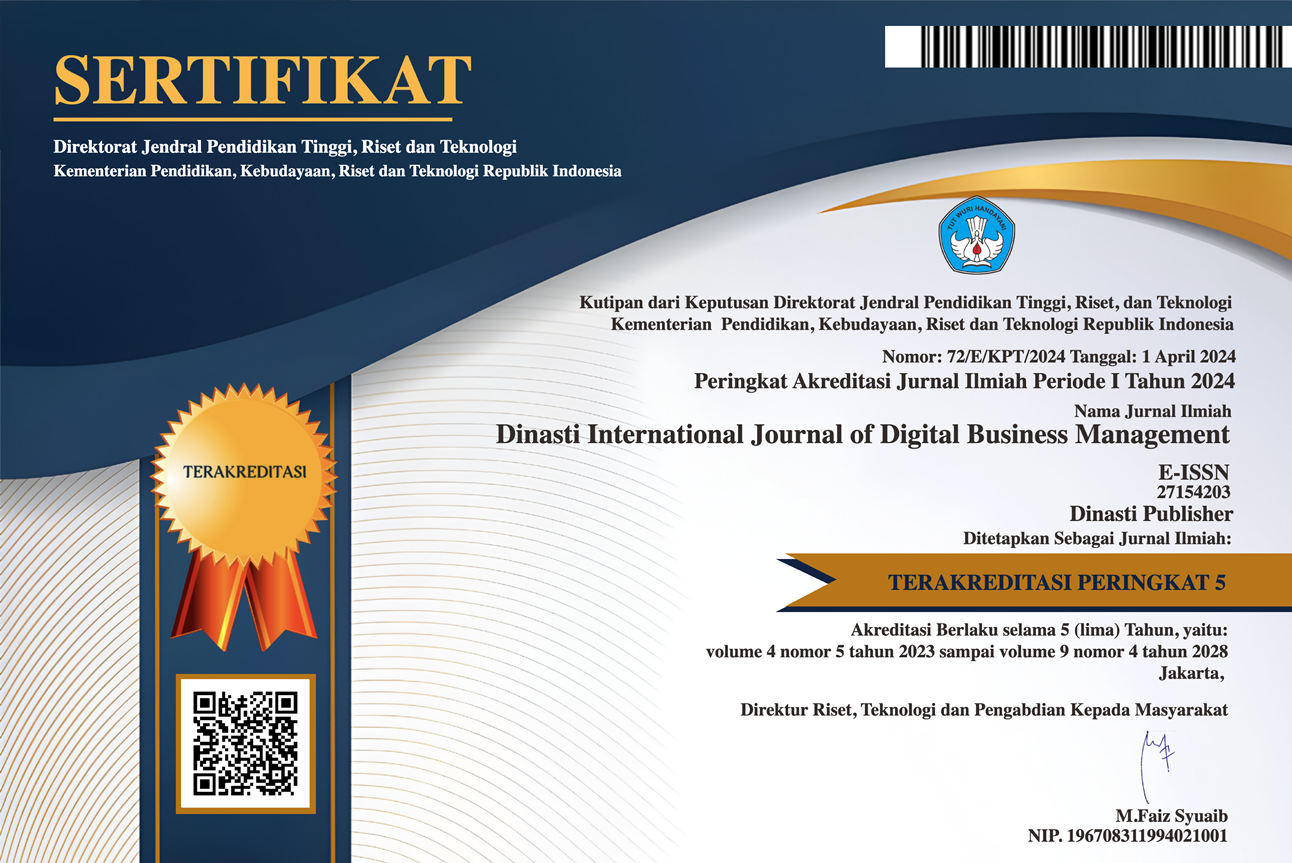Role of Training and Development Source Human Resources in Improving Performance
DOI:
https://doi.org/10.38035/dijdbm.v6i2.4284Keywords:
HR Training, HR Development, Employee Performance, Organizational EffectivenessAbstract
Human resources (HR) training and development play a pivotal role in enhancing organizational effectiveness and employee performance. This study explores the significance of HR training and development in improving employee performance through a comprehensive systematic literature review (SLR). Relevant literature was gathered from various academic databases, including Google Scholar, Scopus, and Mendeley, to ensure a diverse and comprehensive collection of studies. The findings indicate that HR training and development programs positively influence employee skills, competence, and productivity, leading to improved performance. This research emphasizes the importance of aligning training and development initiatives with both individual employee needs and broader organizational strategies. The results suggest that organizations investing in HR training and development can achieve long-term success by fostering a skilled and motivated workforce.
References
Aguinis , H., & Kraiger , K. (2009). Benefits of training and development for individuals and teams, organizations, and society . Annual Review of Psychology , 60 https://doi.org/10.1146/annurev.psych.60.110707.163505
Agyemang, C.B., & Ofei , S.K. (2013). Human resource development practices in Ghana: A case study of the manufacturing sector . International Journal of Training and Development , 17(3), 233-253. https://doi.org/10.1111/ijtd.12009
Alnawfleh , S. H. (2020). Effect of training and development on employee performance in Aqaba Special Economic Zone Authority. In Journal of Business &Management…. pdfs.semanticscholar.org.
Andayani , TBN, & Hirawati , H. (2021a). The Influence Human Resources Training and Development To Performance Employee Pt Post Indonesia Branch City Magelang . https://doi.org/10.31599/jmu
Bartel, A. P. (2000). Training, wage growth, and job performance: Evidence from a company database . Journal of Labor Economics , 18(4), 515-544. https://doi.org/10.1086/209964
Birdi, K., & Patterson, M. (2007). The impact of training on performance: A meta-analysis of training effectiveness . International Journal of Management Reviews , 9(4), 257-276. https://doi.org/10.1111/j.1468-2370.2007.00201.x
Blume, B.D., Ford, J.K., Baldwin, T.T., & Huang, J.L. (2010). The interplay of training, motivation, and learning outcomes: A meta-analytic review of the literature . Personnel Psychology , 63(1), 1-52. https://doi.org/10.1111/j.1744-6570.2009.01128.x
Brown, K. G., & Keeley, S. M. (2007). Performance analysis of training interventions: A practical guide to evaluating training . Journal of European Industrial Training , 31(5), 393-419. https://doi.org/10.1108/03090590710774447
DeGrip , A. , & Sauermann , J. (2013). The impact of training on productivity: A meta-analysis . International Journal of Training and Development , 17(3), 218-232. https://doi.org/10.1111/ijtd.12005
Garavan , T. N., Carbery, R., & Rock, A. (2012). Mapping talent development: Definition, scope and architecture . 36(1), 5-24. https://doi.org/10.1108/03090591211192614
Haidarravy , A., & Anshori , M. (2023). Analysis bibliometrics about training and development source Power human . Journal Management Human Resources , 8(3), 215-230 .
Joo, B. K., & Park, S. (2010). Effects of leadership styles on employees' outcomes in the Korean private sector . Journal of Leadership & Organizational Studies , 467-477. https://doi.org/10.1177/1548051809359893
Koc, E., & Bozdemir, S. (2021). Training and development practices and organizational performance: A review of the literature . Journal of Management Development , 40(4), 371-388. https://doi.org/10.1108/JMD-04-2020-0243
Kunz, W. H., & Hogreve , J. (2012). The influence of training on service employees' customer orientation and service behavior . Journal of Service Research , 15(2), 221-236. https://doi.org/10.1177/1094670511414873
Lee, K., & Bruvold , N. T. (2003). Creating value for employees: Investment in training and development . International Journal of Human Resource Management , 14(6), 981-1000. https://doi.org/10.1080/0958519032000138537
McLagan, P. A. (1989 ). Models for HRD practice . Training and Development Journal , 43(9), 49-60.
Noe, R. A. (2017). Employee training and development ( 7th ed.). New York: McGraw-Hill Education.
Salas, E., Tannenbaum, S. I., Kraiger , K., & Smith-Jentsch, K. A. (2012). The science of training and development in organizations: What matters in practice . Psychological Science in the Public Interest , 13(2), 74-101. https://doi.org/10.1177/1529100612436661
Thank God , H., & Abunar , M. (2021). Employee training and development for improved performance. PalArch's Journal of Archaeology of ….
Yang, B., & Chen, L. (2020). The relationship between human resource management practices and employee performance: 31(18), 2347-2377. https://doi.org/10.1080/09585192.2019.1623797
Downloads
Published
Issue
Section
License
Copyright (c) 2025 Frans Tamba Raja Purba

This work is licensed under a Creative Commons Attribution 4.0 International License.
Authors who publish their manuscripts in this journal agree to the following conditions:
- The copyright on each article belongs to the author(s).
- The author acknowledges that the Dinasti International Journal of Digital Business Management (DIJDBM) has the right to be the first to publish with a Creative Commons Attribution 4.0 International license (Attribution 4.0 International (CC BY 4.0).
- Authors can submit articles separately, arrange for the non-exclusive distribution of manuscripts that have been published in this journal into other versions (e.g., sent to the author's institutional repository, publication into books, etc.), by acknowledging that the manuscript has been published for the first time in the Dinasti International Journal of Digital Business Management (DIJDBM).















































